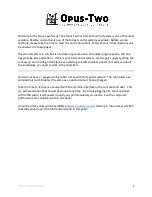
Chapter 3
– Mechanical & Electrical Installation
23
FT742-DM (4-20mA)
– Sensors
- User Manual
Ideally the data acquisition system should be enclosed within a grounded metal enclosure and the data
acquisition system’s ground connected to the enclosure chassis. Where termination of cable shielding at the
data acquisition end has been recommended above, it should be done so using 360
°
termination via EMC cable
glands within the wall of the enclosure before the signal wires are allowed to enter. This helps to protect the
sensor and data acquisition system against surge currents and voltages, and helps to prevent interference from
being induced onto the signal lines.
The use of Surge Protection Devices (SPD’s) is recommended. These devices should be located as close as
possible to where the signals enter the enclosure (within the metal enclosure) and their ground connections
connected to the enclosure chassis. All connections from the sensor to the data acquisition system and to
power should pass through the SPD’s. This will suppress any unwanted overvoltage transients present on the
signal or power lines. The SPD’s should be UL 1449 listed and have a minimum surge current rating of 20kA
(8/20μs waveform).
All structural grounding connections should have a minimum cross sectional area of 50mm², while mating
surfaces should be uncoated and free of corrosion. All cabling should have a minimum bend radius of 57mm to
prevent flashover and interference.
Installing the sensor as described in this section can help achieve a lightning protection zone level of LPZ 0B (in
accordance with IEC 62305-4).
For non-meteorological applications with a higher risk of lightning exposure, where the sensor is mounted within
close proximity of the strike point, we would recommend the Pipe-Mount (PM) range of sensors. In such
applications, a different grounding method should be employed and the Pipe Mount variant is a more suitable
solution. Please contact FT Technologies for further information.






































